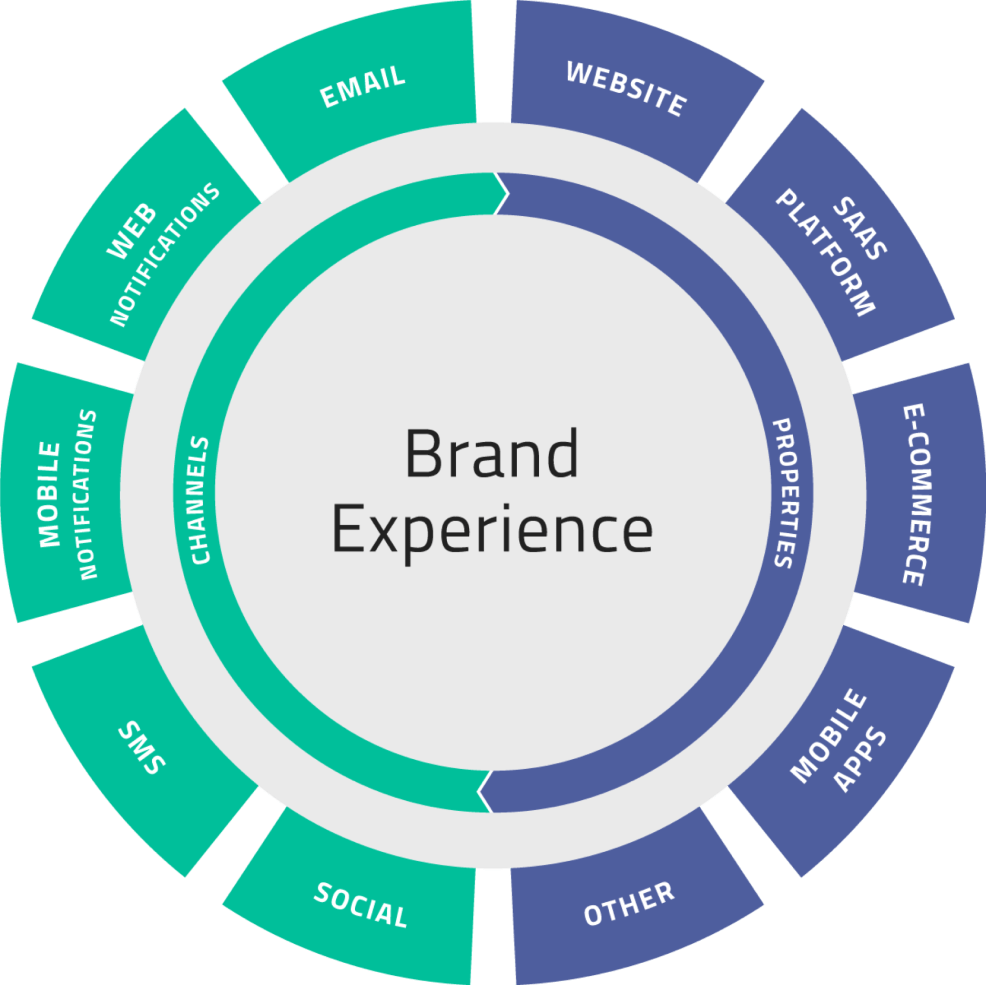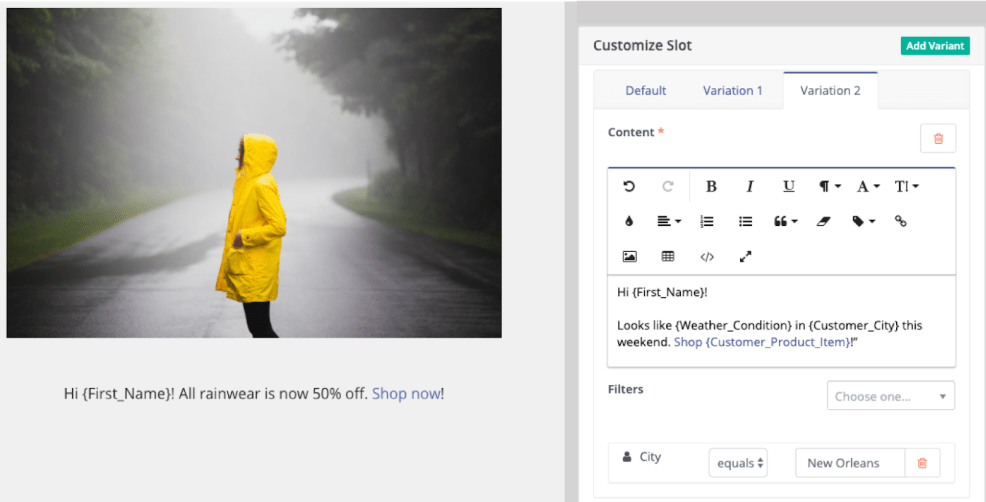
How Open Marketing Delivers Flexible, Memorable Customer Experiences

The new essential battle for marketers is creating memorable and personal customer experiences that help brands build meaningful relationships with their audiences. For years, I worked in B2B marketing, demand generation and content, learning all the ways marketers craft great brand stories. In the past few years, I’ve seen the role of marketing become more customer-centric and extend throughout the entire enterprise. Now, marketers are responsible for both building brand awareness and establishing customer relationships. Good marketing needs to act as an open gateway between businesses and the outside world.
But what does it mean for marketing to be “open?”
When I checked Merriam Webster for an answer, I came across more than 20+ definitions of “open” from “permitting passage” to “unrestricted” to a slightly gross association with open wounds. Still, the explanation that fit best was, “Having no enclosing.” The concept of open marketing invites an unbound possibility for growth and creativity. It means breaking down barriers between departments in your organization and between brands and customers.
Last week, I joined Stephanie Stahl of the Content Marketing Institute to host the webinar “Open Marketing: What Every Marketer Needs to Know.” More than 700 people registered for the webinar to learn exactly what “open marketing” is and how marketing teams can use open marketing technology like Acquia Campaign Studio to welcome customers into their brand ecosystem, foster relationships and gain feedback from the market to create an accessible and exceptional brand experience.
If you weren’t able to attend the webinar, never fear! You can catch up on the full presentation, here, and get a run-down of our view on how open marketing allows marketers to create more genuine personalized experiences in the recap below.
The Pillars of Building Long-Term Customer Relationships
Imagine this situation: you meet someone, you have a great chat and maybe grab a coffee. Then you meet up with that person a few more times, and every time you see them, you have to re-introduce yourself. They don’t remember anything about your previous conversations — and this happens again and again. It makes for a very awkward (and slightly insulting) experience. After a while, you’ll probably write that person off. You might even think to yourself how selfish and inconsiderate they are. The same courtesies apply for brands when you’re building relationships with your customers.
Customer experience isn’t a one-time transaction. It’s an ongoing conversation that builds upon everything that came before and everything that comes after.
In general, I like to follow three main principles to foster strong relationships with customers:
- Two-way dialogue. Marketers can’t only reach out when we need something. We have to be available when there is a customer need to address.
- Exchange of value. We must deliver meaningful value to customers through content and other interactions. It doesn’t require grand gestures. It’s the little things like sending a quick thank-you email for subscribing to your newsletter or offering a discount code to a customer who shares their feedback.
- Reflecting interest and sentiment. Relationships are about getting to know and recognize customers when they come back, so they don’t feel treated like a stranger every time they interact with your brand.
Personalizing the Customer Experience
Personalization helps marketers deliver better communication by using the power of data to customize digital experiences based on audiences' real preferences. Here are five key tools to personalization that can help marketers create and execute better messages to their audiences.
1. Segmentation
Segmentation organizes your audience into smaller, more targeted lists based on specific characteristics that are valuable to your business such as geography, demographics and purchase behavior.
2. Multiple Channels
Personalization can and should be applied across all your channels — not just email. People are constantly receiving content from multiple touchpoints so you need to be able to reach them wherever they’re spending time from web to social media to SMS. So if you’re a B2B brand doesn’t mean you can’t step outside the traditional platforms and try a new strategy through something like text messages or Instagram.

3. Dynamic Content
Dynamic content is customized messaging based on visitors' past interactions with your brand. A dynamic approach helps marketers assign rules or instructions to content so that it can automatically adjust for each contact.

4. Preferences
Understanding how customers prefer to experience your brand is all about being a good listener. Give customers a choice in how, where and how often they receive your content by asking them about their preferences.
5. Machine Learning
As machine learning and artificial intelligence become more popular across every industry, these tools can also help you optimize messages by device, length and format.
The Advantages of Open Technology
Building seamless experiences where every touchpoint is connected and personalized is a difficult goal to achieve. I believe that one of the leading inhibitors to creating fully integrated customer experiences comes from the limitations and confusion in our technology choices. Today’s martech landscape is riddled with thousands of tech options that further complicate our jobs and make it hard to know if we’re using the best solutions that make sense for our teams’ needs in terms of cost, efficiency, growth and long-term business goals.
If you’re struggling to navigate the extensive tech selection and implementation process, finding an open technology that fulfills your needs can make a huge difference in streamlining your stack and allowing you to add new solutions as your business objectives evolve done the road.
Here are a few of the key characteristics to look for when evaluating open technology solutions:
1. Flexibility
- Open technology supports simple and sophisticated campaigns
- Open technology allows you to quickly run campaigns, learn what techniques work for your brand and repeat them for success
2. Free movement of data
- Data should be able to move freely through all of your systems
- You should be able to own and access all of your data at any time
3. No limits to basic needs
- Technology integrations offer a wide variety of native integrations
- Open APIs that allow for easy connections between what data can be shared, and what functions can be driven
Open marketing offers both inclusiveness and adaptability. It is truly limitless and facilitates the free flow of data and personalized user experiences. The combination of an open mindset and open technology brings together every piece of the customer experience and allows marketers to actively listen and learn from their customer data. This can massively transform your business and strengthen your relationships with customers.
To see how Acquia Campaign Studio's open marketing automation technology helps teams of all sizes build seamless customer experiences, request a demo.

